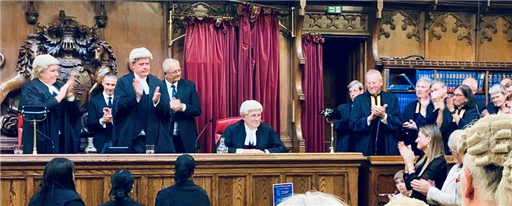
To Advise or Not to Advise – An Abundance of Caution? What Limitations Can Be Imposed and What are the Parameters of a Family Law Solicitor’s Duty?
Published: 21/11/2023 07:00

‘I did not have the money, and she did not have the time’ said Joanne Lewis, during her evidence before HHJ Coe KC at a final hearing in November 2022 (with judgment handed down on 31 March 2023) to determine Mrs Lewis’ professional negligence claim against her matrimonial solicitors, Cunningtons (Lewis v Cunningtons Solicitors [2023] EWHC 822 (KB)).
Mrs Lewis’ words will ring true for both clients and practitioners alike (in particular, solicitors). It is this age-old issue about fees which has given rise to the (using King LJ’s words1) ‘bespoke or “unpacked” services whereby [solicitors] will undertake to act for a litigant in person in relation to a discrete part of a case which is particularly challenging to a lay person’.
Defining one’s scope of services as a practitioner has always been extremely important but this becomes increasingly so when instructed by a client to carry out a bespoke service (such as drafting the consent order to reflect the terms of an already agreed settlement).
Lewis v Cunningtons provides some insight into limited retainers and the use of waiver letters and disclaimers. The case also restates the jurisprudence surrounding a solicitor’s duty to their client and raises some important questions as to procedural best practice in respect of pensions at an early stage of the retainer, or in proceedings.
Background
Mrs Lewis married her husband, Paul Mayne, in 1993. Mr Mayne was in the police and had been since 1988. At the time of the divorce, Mrs Lewis was a visiting benefits officer for Braintree District Council, a job she had held since 2003. The marriage broke down in 2012. Taking into account a few years of cohabitation, this was a marriage of 20 or so years, which on any analysis is a long marriage. At the time of the breakdown of the marriage, Mrs Lewis was 47 and Mr Mayne was 55.
Mrs Lewis had an initial consultation with Cunningtons in May 2012. After a further meeting in May 2013, Cunningtons were officially retained. By the time of the written retainer, it was clear that, notwithstanding the absence of disclosure, Mrs Lewis and Cunningtons had a general awareness of Mr Mayne’s financial position.
The retainer letter referred to Mr Mayne’s salary of £47,000 gross per year, his side business involving the development of websites, and ‘a private pension of high value such that he would receive a lump sum of approximately £120,000 in 2014, a further lump sum of £67,000 three years thereafter and then a further lump sum, together with an annual pension of £22,000’.2 They had lived in police accommodation since the start of the marriage and it was clear that Mr Mayne’s pension was therefore by far the most valuable asset.
The retainer letter also included seemingly generic details about the way in which financial disputes might be settled, which included, inter alia, direct agreement between the parties themselves. The letter also included reference to a derisory offer from Mr Mayne of £2,000 in full and final settlement of Mrs Lewis’ claims. Mrs Lewis’ solicitor, Ms Perks, rightly recognised that she could advise Mrs Lewis not to accept that offer, even without having seen Mr Mayne’s disclosure.
Mrs Lewis chose to seek an agreement through direct discussions with Mr Mayne. Cunningtons wrote to her in November 2013 stating that she could agree a settlement directly with Mr Mayne, but that if she did so, they would not be able to advise her as to whether the terms of the settlement were fair or reasonable.
In February 2014, Mrs Lewis informed her solicitor that she and Mr Mayne had agreed a settlement whereby Mr Mayne would pay Mrs Lewis a lump sum of £62,000 (less £11,500 already paid by him) and that in return Mrs Lewis would agree to transfer a jointly held endowment policy worth c. £15,000, which had a maturity value of £31,000 in 3 years’ time.
In March 2014, Cunningtons responded by saying that they could not comment on whether such an agreement was fair or reasonable in the absence of disclosure. Disclosure had been requested of Mr Mayne, but he had not complied.3
At that point, Mrs Lewis was asked to sign and return a disclaimer, which she did on 11 March 2014. The disclaimer was worded as follows:
‘I … confirm that I have been advised that there should be an exchange of full and frank financial disclosure before my solicitors can give me any advice in relation to suitable financial settlement options.
I have instructed my solicitor that I do not wish for there to be an exchange of full and frank financial disclosure and I accept that I have not been given any advice in relation to possible settlement options …
I understand that I am going against my solicitor’s advice and confirm that I wish to proceed in the absence of full financial disclosure.’
In April 2014, Ms Perks left Cunningtons and Ms Wiggins took over Mrs Lewis’ matter.4 Prior to a consent order being drawn up, Forms D81 were exchanged in which Mr Mayne’s assets were listed at £590,712. £540,712 of this was attributable to the cash equivalent (CE) value of his police pension. Mrs Lewis’ D81 had assets of £-4,525. The consent order reflecting the agreed terms was sealed in August 2014.
Mrs Lewis’ case against Cunningtons was as follows:
- that irrespective of the lack of disclosure, the settlement she reached with Mr Mayne was obviously unfair;
- that accordingly Cunningtons were negligent and wrong to say they could not advise her;
- that at the time she should have been advised to apply for a pension sharing order and that Form P should have been sent to Mr Mayne/his pension provider; and
- that had she applied for a pension sharing order, the court would have awarded her 50%, and that she therefore suffered a loss of c. £500,000, based on the applied actuarial calculations.
A key part of Mrs Lewis’ claim was also that she was an unsophisticated client and that she was vulnerable at the time because she was suffering from depression and stress. She stated that she was intimidated by and scared of Mr Mayne, who had been bullying her and pressuring her into a settlement. Cunningtons disputed that Mrs Lewis was vulnerable or unsophisticated and disputed that they knew or ought to have known that she was subject to pressure, let alone bullying or intimidation.
Cunningtons’ case5 essentially had two strands to it. Their primary position was as follows:
- Cunningtons were not negligent because Mrs Lewis agreed to the settlement with Mr Mayne without Cunningtons’ involvement and without full and frank disclosure, which led them to tell Mrs Lewis they could not advise on the fairness and reasonableness of the settlement; and
- Mrs Lewis signed the waiver.
Accordingly, their argument was that there was no breach of duty to advise on the settlement. Cunningtons’ secondary position however was as follows:
- that they advised Mrs Lewis as to the total capital position and that the starting point for division of assets on divorce was 50/50;
- that they advised that a pension sharing order could be considered and was something the court could order; and
- that they advised the proposed settlement was unlikely to be a good deal for Mrs Lewis.
And that therefore, to the extent they did owe a duty, they had discharged that duty.
The judge referred to Minkin v Landsberg [2015] EWCA Civ 1152, [2016] 1 WLR 1489 (which was ultimately distinguished on the facts), where Jackson LJ summarised the relevant principles in relation to a solicitor’s duty of care and the scope of that duty (emphasis added):
‘i) A solicitor’s duty is to carry out the tasks that they have agreed to undertake and that the client has instructed them to do;
ii) it is implicit in the retainer that the solicitor will give advice which is reasonably incidental to the work being carried out;
iii) that “reasonably incidental” depends on the circumstances of the case, including the character and experience of the client;
iv) that the solicitor and client may by agreement limit the duties which would otherwise be part of the solicitor retainer.’
Donaldson LJ, in Carradine Properties Ltd v DJ Freeman & Co (A Firm) [1999] Lloyd’s Rep P N 483, stated that whilst ‘the scope of [the] retainer is undoubtedly important … it is not decisive’.6 Donaldson LJ went on to say that an ‘inexperienced client will need and will be entitled to expect the solicitor to take a much broader view of the scope of his retainer and of his duties than will be the case with an experienced client’.
In Duncan v Cuelenaere, Beaubier, Walters, Kendall & Fisher [1987] 2 WLR 379, the court also considered the ‘experience and training of the solicitor’ to be an important factor (although the authors suggest it is doubtful that this would ever stand as a sufficiently mitigating excuse).
In Midland Bank Trust Co Ltd v Hett Stubbs & Kemp [1978] 3 WLR 167, Oliver J said:
‘no doubt the duties owed by a solicitor are high, in the sense that he holds himself out as practising a highly skilled and exacting profession, but … the court must be wary of imposing upon solicitors … duties which go beyond the scope of what they are requested and undertake to do … The test is what the reasonably competent practitioner would do having regard to the standards normally adopted in his profession …’
In Credit Lyonnais SA v Russell Jones & Walker [2002] EWHC 1310 (Ch), Laddie J said ‘A solicitor is not a general insurer against his client’s legal problems … However, if, in the course of doing that which he is retained, he becomes aware of a risk or a potential risk to the client, it is his duty to inform the client’.
As ever, any finding as to whether a solicitor gave inadequate advice will depend on the circumstances of the particular case.
Decision
A primary question for the judge to answer, therefore, was whether Cunningtons had limited their retainer. Importantly, for the purposes of distinguishing this case, Minkin concerned a financially sophisticated accountant who had already taken advice on the merits of an agreed settlement from a previous firm of solicitors, and who had instructed her subsequent solicitors to draft an order in the terms of the agreement. Cunningtons relied on their initial retainer letter, which explained the usual routes to settlement. The judge stated, however, that just because Mrs Lewis had pursued a direct settlement approach with Mr Mayne, this did not mean that the advice given to her should be in some way limited. It is of note that the retainer was headed ‘in relation to your divorce and financial matters’, as they often are at the inception phase of a new instruction.
The facts in the present case were different from Minkin, not least because there was a long period of time after initially being instructed where Cunningtons’ role was not merely to draft a consent order. Accordingly, for a significant period the scope of their duty ‘was the usual broad scope of duty when advising a client in respect of divorce and financial matters’.7 The court also rejected Cunningtons’ argument that whilst that period of time existed, there came a time when Mrs Lewis accepted the direct settlement route and signed the waiver, and it was at that point the retainer became limited.
The judge stated that Cunningtons had enough information to advise, ‘even if in general terms (i.e. not down to the last penny)’8 and should have made it clear well before Mrs Lewis’ discussions with Mr Mayne that she could expect the court to make a pension sharing order, with a starting point of equal division. The judge stated:
‘the situation between [Cunningtons] and Mrs Lewis at this point required that the reasonably incidental duties would have required it to set out at least for Mrs Lewis, a comparison between what she would receive through the proposed settlement and what she would reasonably receive if she pursued the matter to court. In short, she should have been advised that she was foregoing the opportunity to be awarded several hundreds of thousands of pounds.’9
Furthermore, Ms Wiggins (who took over Mrs Lewis’ file from Ms Perks) also had a duty to ‘positively ... advise Mrs Lewis and in any event not to refuse to advise her’.10 At that point, Ms Wiggins had also had sight of Mr Mayne’s D81. The judge stated:
‘I find that any reasonably competent solicitor would have advised the claimant that the proposed settlement order was obviously and exorbitantly one-sided in the husband’s favour, giving the claimant less than 15% of the disclosed matrimonial assets and leaving her with an inadequate financial provision in the future, and particularly in retirement. I find that she should have been told that the court would make a pension sharing order in this case and that the starting point would be 50%. The circumstances in which the court would not have made such a pension sharing order in this case are very difficult to envisage indeed.’11
The judge accepted Mrs Lewis’ evidence as to her vulnerability and rejected Cunningtons’ assertions on that point to the contrary. Mrs Lewis’ vulnerability at the time only served to extend the duty owed by her solicitors. The judge accepted Mrs Lewis’ evidence that she felt she had to sign the disclaimer letter in order to proceed further with the divorce process.
The judge also found that Cunningtons should have served a Form P (as per Martin-Dye v Martin-Dye [2006] EWCA Civ 681, [2006] 1 WLR 3448) and that Mrs Lewis should expect that a court would make a pension sharing order and that such an order would be of an equal split of capital.
The judge ultimately awarded Mrs Lewis £400,000. This figure took into account the expert’s figure in respect of the pension value, less the monies already received by Mrs Lewis from Mr Mayne, less costs had the case proceeded to trial. The judge also factored in the likelihood that Mr Mayne would ultimately have made an offer of 80% of the value of Mrs Lewis’ entitlement, which she would have accepted. In any event, it seems the court went with the more generous figure posited by the experts, which suggested the Family Court would have ordered an equal split of capital.
Commentary
On the one hand, practitioners reading this may think it an obvious determination in circumstances where, even from the beginning of their retainer, Cunningtons had enough knowledge (absent full and frank disclosure) to know of the importance of and therefore advise upon Mr Mayne’s pension. It is also of note that Uniformed Forces pensions are famously valuable and that the CE value may understate their true value. The need to advise was even more pronounced at the point where Forms D81 were exchanged. This could have been different if Mrs Lewis had no knowledge of Mr Mayne’s pension and he had continued to refuse to engage with the disclosure process, although as above, the fact that he was in the police (and the parties lived in police accommodation) should have indicated that there was likely to be a significant pension.
Notwithstanding parts of the evidence given under cross-examination by the solicitors,12 practitioners may have some limited sympathy towards Cunningtons. There is reference to an attendance note of Ms Perks which reads that Mrs Lewis was ‘unlikely to be getting a good deal’ and that they were ultimately instructed to prepare a consent order and not pursue an exchange of financial disclosure. There was also, as ever, Mrs Lewis’ apprehension and inability about being able to pay for a longer legal process and her wanting to ‘get rid’ of Mr Mayne. It is not uncommon for clients to be at their lowest ebb in the early stages of consulting a solicitor and to want a quick resolution. This can particularly be the case when the alternative is an expensive and drawn-out process with a bullying and non-disclosing spouse. Solicitors will be familiar with clients instructing them to not incur any more time on their matter, or to limit any future costs. Some practitioners may argue that this makes it difficult to expect solicitors to remain alert to any potential risks to the client. It is also of note that the clearly needs-based cases, where there is simply less to go around (and arguably the stakes are higher), are often those cases where one or both parties are unable or unwilling to pay for extensive legal advice.
The judge provided some guidance as to what would have been reasonable non-negligent advice (again, emphasis added). According to the judge, Mrs Lewis ‘should have been told about her options in clear terms and by reference to sums of money. The advice could certainly have been prefaced by “on the basis of the information we have so far”’.13 Such advice does not need to be lengthy and is of such importance that it should, in any event, take priority over concerns as to whether a client is able to pay for the time spent.
The judge also made clear that a ‘one-size fits all’ disclaimer was not appropriate. It is clear that waiver letters should not only be carefully crafted, but also should not be used as a general insurance policy to avoid or mitigate against poor advice in the first place.
In respect of Mrs Lewis’ vulnerability, such presentation is arguably a common occurrence in family law and practitioners should be wary that the court may make such findings more often than not.
The judgment does not provide extensive information as to how the (police) pension came to be valued but it is noticeable that, in its 2019 report (although such report post-dates Cunningtons’ negligence), the Pension Advisory Group (PAG) flags that ‘uniformed service public sector Defined Benefit schemes’ are one such scheme where an expert’s input is likely required. A public sector defined benefit scheme is one which should therefore be a red flag for practitioners, as the attributable CE value is likely to be much less (almost half in this instance) than the pension’s true worth’.
The judgment is noticeable for family practitioners in respect of the judge’s frequent reference to the requirement to serve Form P and that this should have been done in this case. The PAG report notes that ‘Although it is regarded as best practice to obtain a Form P in relation to every pension under consideration, and that Form P may be very useful in some cases, this best practice is widely ignored by practitioners and courts’.14
There is also a query as to whether Form P is fit for purpose in any event and this case may encourage discussion in this regard. The PAG suggests information that pension experts would like to see in Form P (which is not included in the form currently) in addition to member-specific information which would assist the pension scheme administrators.
It is arguable however whether Form P would have made a difference in the present case, or whether it serves much of a purpose to enable solicitors, or instructed counsel, to advise upon the financial aspects of a case, particularly in the case of a defined benefit scheme where the CE value may be so much lower than the true value.
Pensions remain one of the main potential sources of negligence litigation against solicitors. They remain an overlooked part of the divorce process, in part because of their complexity, in part because some clients do not want to engage with them and, sometimes, because in high net worth cases the pensions are dwarfed by other assets. Pensions must however be better understood. Practitioners would be wise, therefore, to place considerable focus and allocation of their professional development time on this (potentially very expensive) asset class.










